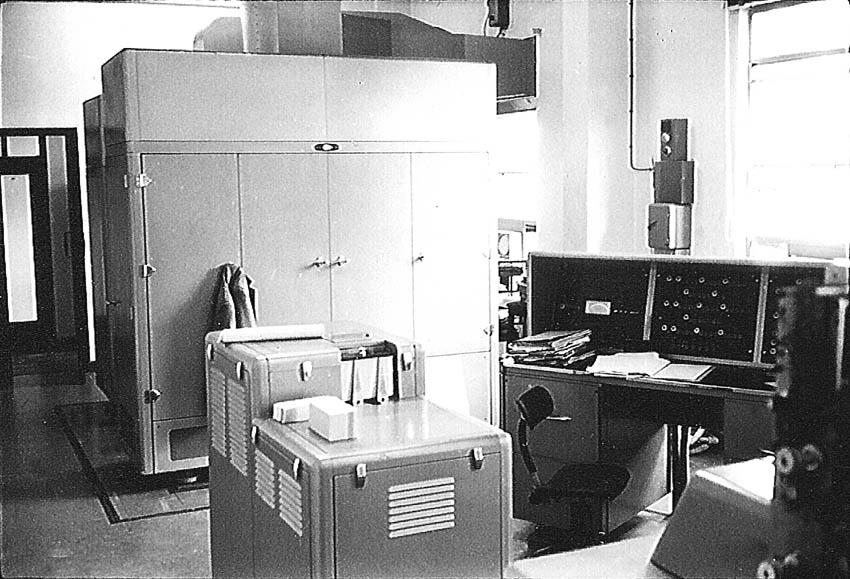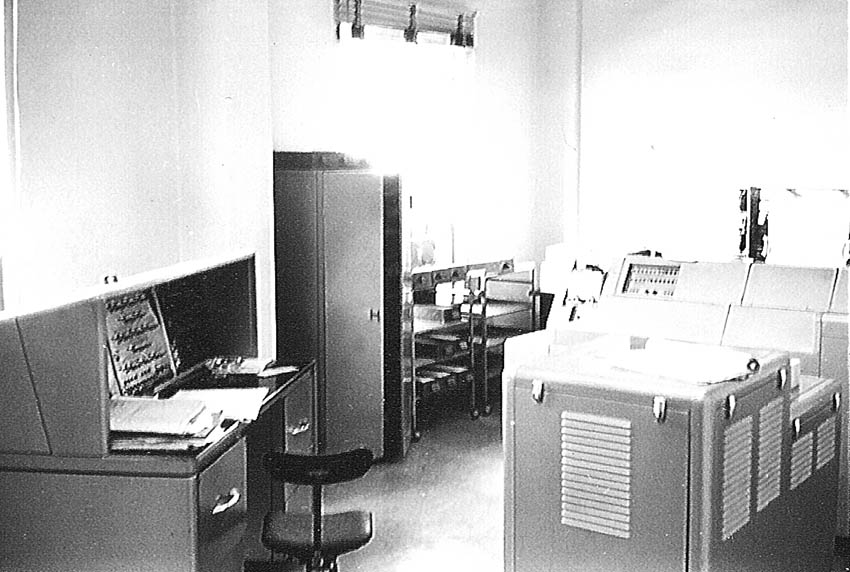Early Computers In Kenya
The ICT 1202 at EAR&H
The first "real" computer in East Africa was delivered by ICT(East Africa) for use by the East African Railways & Harbours Administration (EAR&H). The exact date of delivery is unknown, but these pictures were taken soon after it was first put into production in 1960.It was an ICT 1202, also known as HEC (Hollerith Electronic Computer). It consisted of a CPU with drum storage, while input/output was performed by a an ICT 901 Tabulator modified to act as a peripheral to the CPU. This was used for card reading and printing, while card punching was done via a card-punch linked to the tabulator.
Because air-conditioning as we know it today was unavailable in Nairobi at the time, a special extractor hood was manufactured to exhaust the hot air out of the CPU cabinets and direct it out of a window. Being a valve machine (prior to the general use of transistors in computers) a lot of heat was generated which had to be removed from the room. This machine took so much electrical power that it could only be switched on in the morning after the local bakery had finished baking its bread overnight - as the local electrical sub-station could not generate enough power to support both the bakery ovens and the 1202 at the same time.
The primary use of this machine was for the weekly and monthly payroll preparation, although it was also used on an experimental basis to compute optimum values for "cut and fill" in the construction of new railway routes.
At the back of the room we can see the two main cabinets of the CPU with the operator's console to the right. The latter was a desk-like structure with a hood enclosing three large panels. The left panel was taken up with electical meters (Mains voltage, DC voltages, amps, drum rpm, etc) the center panel held rows of toggle switches, and the right panel consisted of banks of small neon bulbs reflecting contents of registers etc. The hood was to assist in being able to see the faint light of the neon bulbs which would otherwise be hard to make out in the presence of overhead fluorescnt lighting which operated on the same frequency.
Center front is the card punch, and in the right-bottom corner of the picture we can just see the edge of the "tractor mechanism" attached to the print unit of the tabulator. This pulled the multi-part sprocket-holed stationary (with intervening layers of carbon paper) through the printer platen in a controlled fashion so that pre-printed stationary could be aligned correctly.
At the left we can see the operator's console, to the right is the card-punch, and behind that is the tabulator. The card-feed station on the tabulator was at its left-hand end right next to the small panel of operators switches which are just visible here. The print unit (consisting of 120 individual print-wheels and a platen is located at the right-hand end of the machine underneath the sheet-metal cover. The structure sticking out above the print-unit is the tractor-feed mechanism described above.

